#queen of the quattrocento
Note
This year Starz relased 2 series that portray adultxteenager relationships that happened ok the past... There was so much expectation about Seymour/Elizabeth, the most famous of the 2 (I expected the show to be more straightforward about It being abuse & wrong, BTW), but not so much for the lesser known Diane/Henry in Serpent Queen... My question is: do you think the Diane/Henry scenario is similar/different to the creepy, abusive Seymour/Elizabeth?
i think i must have been crafting a reply for about an hour and i'm still stressed out it will come out wrong lol
the interesting thing about elizabeth/seymour versus diane/henri is that, to me, both dynamics are indeed using grooming mecanisms but in different ways. Now, I'm not a specialist when it comes to Seymour/Elizabeth, so maybe other people could bring you a better answer when it comes to them, but a lot of their dynamic rested specifically on the authority he held over her, and the imbalance of power it created. Seymour was a predator, who used and abused his position to ensure that Elizabeth would remain under his complete control.
The dynamic is naturally very different from the start between Diane and Henri; while Diane was indeed the governess of the royal children, it was a formal title and a formal position that had little to do with actually raising the kids. She was not a mother figure to Henri and never claimed to be, no matter what historians have been making up over the centuries.
Interestingly enough we can draw parallels between Henri and Elizabeth on several aspects of their childhood. They both lost their mother at a very young age (3 for Elizabeth, 5 for Henri), were subsequently removed from their father's care (she was ruled a bastard, Francis was captive in Spain), and led very reclusive lives for their formative years (Elizabeth under Seymour's 'care' and Henri in captivity in Spain). Those traumatic events happened in an excessively rapid succession and created what i can only assume would be devastating, lifelong emotional consequences, that probably rendeered them both very pliant in certain situations and, perhaps, prone to abuse and grooming.
It's immensely difficult to come up with a definitive answer for Diane because you need to break down a lot of stereotypes and detangle five hundred years of sexism and misogyny. Men too are subject to grooming, especially young men in desperate need of affection and validation like Henri was. It's also true that an imbalance of power with women at the top and younger men at the bottom was (and still is) considered attractive on some level, okay on others, suitable sometimes. For a long time, in the decades and centuries following the rise of courtly love all the way to the Italian quattrocento and later on, women of aristocratic backgrounds, generally older, were often asked to teach younger men the 'ways' of society, mainly in the art of conversation and manners; i haven't found any conclusive work led by gender-studies specialists to know if those theories are still maintained or have been debunked ever since.
Either way, what remains of those theories to this day is that for a long time it was somewhat okay for older women to have near-complete authority over young men, and if it became sexual, then it wasn't perceived as anything reprehensible (key word being, perceived). Considering the way society looks back on cases of grooming over young men in this day and age, i wouldn't be entirely too surprised to find that this level of toxicity was already part of the social landscape of the 15th-16th century.
It is possible that the dynamic that developed between Henri and Diane in his late teen years was motivated by a relation of interdependence between education and grooming. Diane had an impeccable, spotless reputation at court as a very dutiful, gracious and down-to-earth figure; it wouldn't have been alien for people (including Francis) to perceive any form of friendship between her and a very moody royal prince perfectly suitable. People are generally split into two categories when it comes to Diane and Henri entering a sexual relationship. Some say 1538 (which would make him 19), other say it's unlikely they became intimate before his rise to the throne nine years after that. Regardless, Henri was already married (1533) and a father (to a bastard girl, 1538) by the time he consumated his relationship with Diane, who was walking an extremely tight rope herself.
Their dynamic is unique in the sense that Diane had everything to lose in pursuing a sexual and intimate relationship with a younger man, Dauphin or not, after spending years carefully crafting a reputation at Court. An aspect that is often slept on when it comes to Diane is that her much, much older husband could be brutal with his words, and that his own father had murdered his mother in cold blood after finding her in bed with a lover. Entering a marriage at only fifteen with such a heavy precedent in a household can't have been an easy thing for her to navigate through. It's possible that the age difference in her own marriage affected her perception of men/women dynamics and/or created/affected her emotional needs.
In contrast, Seymour could have lived well enough without assaulting a minor under his care. Had he been a decent father figure, it seems unlikely that Elizabeth would have turned her back on him after ascending the throne. I'm not saying there was only love and an innocent romantic bond between Diane and Henri, as opposed to Seymour and Elizabeth. What I'm saying is, the patterns are different from the start because Diane never had any substantial authority over Henri. If she used grooming methods on him (which might honestly be the case), i do believe those may have been enforced by the context and the toxicity of men/women dynamics of the period.
9 notes
·
View notes
Photo
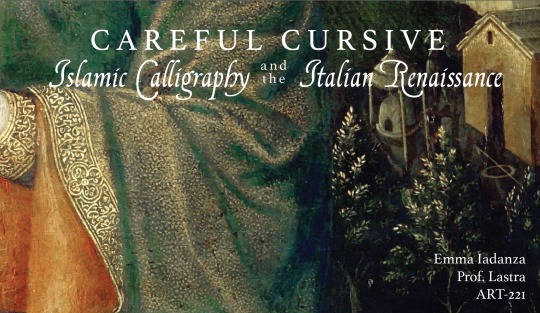
Hi everyone – for my final project for my Islamic Art class this semester, I curated a virtual exhibit, Careful Cursive: Islamic Calligraphy and the Italian Renaissance. I did a lot of work for it (including virtual object wrangling) and am very proud of it, so I would love if you could take a look, or share and leave a comment!
#art#art history#academia#exhibit#virtual exhibit#please... i am proud#letters from the authoress#original#she goes to vassar#islamic art#stat rosa pristina nomine#queen of the quattrocento
999 notes
·
View notes
Text
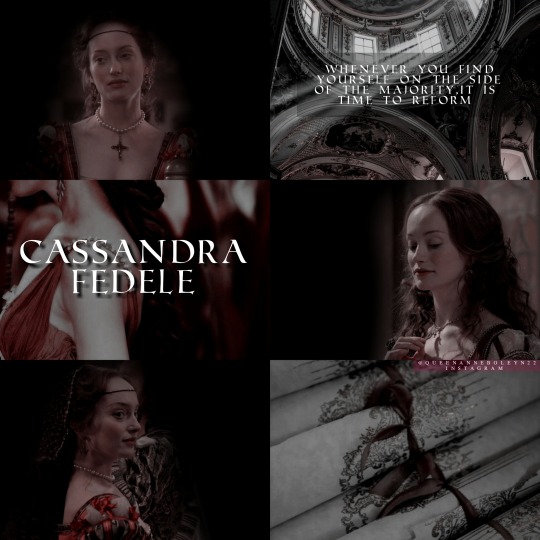
"choose the path for which nature has suited you".
Cassandra Fidelis (Fedele) was educated in philosophy and literature as a child and by the age of twelve was fluent in both Latin and Greek. A famed humanist intellectual of Quattrocento in her day, Cassandra delivered orations on subjects such as the arts and education, and corresponded with other scholars in a collection of letters that were published, along with some of her orations, in 1636. She reached the height of her intellectual career at the age of twenty-three and was then married in 1499, after which her scholarly life virtually ceased. In 1520, she was shipwrecked and lost all of her possessions. A year later, when her husband died, she wrote to some of her contacts seeking help. Cassandra was made prioress of an orphanage at the Church of San Domenico di Castello in Venice, where she remained until her death.
Cassandra was also the most renowned woman scholar in Italy during the last decades of the Quattrocento.Fedele was born in Venice in 1465 to Barbara Leoni and Angelo Fedele. While Fedele does not mention her mother in her writings, we have evidence that her father was respected among the aristocracy and took a great interest in his daughter's learning. When Fedele reached fluency in Greek and Latin at the age of twelve, she was sent by her father to Gasparino Borro, a Servite monk, who tutored her in classical literature, philosophy, the sciences, and dialectics.
In 1487, at twenty-two years of age, she achieved success in Italy and abroad when she delivered a Latin speech in praise of the arts and sciences at her cousin's graduation at Padua. Her speech, Oratio pro Bertucio Lamberto, was published in Modena (1487), Venice (1488), and Nuremberg (1489). From 1487 to 1497, she exchanged letters with prominent humanists and nobles throughout Spain and Italy. One of these correspondents, Isabella I of Castile, urged Fedele to join her court in Spain. Fedele declined the invitation, writing that she could not go while Italy was at war with France. However, Fedele's early biographers believed that the doge Agostino Barbarigo would not allow Fedele to leave Italy, although there is no evidence of such a decree.
In 1520, on Fedele's return from Crete with her physician husband, Giammaria Mapelli, she lost all her belongings in a shipwreck. Her husband died later that year, leaving her a widow, childless, and in financial difficulty. Fedele wrote to Leone X asking for help in 1521, but he did not reply to her letter. She tried again in 1547 and wrote to Paolo III, who responded by giving her a position as the prioress of an orphanage at the church of San Domenico di Castello in Venice where she resided until her death. Fedele may have also struggled with health problems. Before her marriage she complained of an illness that was depleting her strength and making it difficult to concentrate on reading and writing for any length of time.
Fedele's success was short lived. The climax of her scholarly activity occurred between the ages of twenty-two and thirty-three, just prior to her marriage at age thirty-four (1499). After she married, and for almost sixty years, she wrote few letters and was invited only once, in 1556, to deliver a public address in honor of the Queen of Poland, Bona Sforza, who came to Venice. Some historians argue that Fedele abandoned her intellectual pursuits when she got married, as was the case for most learned women of her day who married and assumed full-time management of an entire household. Fedele may have also been discouraged by strong social forces that opposed the scholarly participation of married women. In a letter to Alessandra Scala, who wrote Fedele asking whether she should get married or devote her life to study, Fedele encouraged her to "choose the path for which nature has suited you".
#perioddramaedit#history#edit#history edit#renaissance#cassandra fedele#cassandra fidelis#Agostino Barbarigo#renaissance italy#women of renaissance#women in history#famous women#lotte verbeek#rinascimento#donne della storia#donne nella storia#donne italiane#italian renaissance#humanist#philosophy#renaissance aesthetic#15th century#venice#alessandra scala#bona sforza#isabella of castile#barbara leoni#angelo fedele#Oratio pro Bertucio Lamberto#quattrocento
69 notes
·
View notes
Note
Ciao! Secondo te di cosa stavano parlando nico e il suo ex la mattina che marti lo ha lasciato? È possibile che gli stesse raccontando del suo ragazzo e di mantenere il segreto per evitare altri problemi con i genitori?
Ciao Anon ❤️
Siamo un po' all'oscuro su ciò che possano aver fatto in tempo a dirsi Niccolò e Luai la sera in cui si sono rivisti per la prima volta, prima che Martino desse sfogo al suo lato da drama queen e irrompesse tra di loro per interromperli così graziosamente (Marti, ti si ama sempre ❤️)
Probabilmente molto poco, quindi suppongo che Nico abbia voluto essere certo che Luai stesse bene e non avesse riportato traumi permanenti da quello che aveva passato, si sarà scusato perché Nico essendo Nico si sente atrocemente in colpa, avrà chiesto se la sua famiglia avesse cambiato atteggiamento, avrà cercato di spiegare la reazione di Martino e si saranno brevemente aggiornati sulle loro situazioni attuali, fidanzati gelosi oltre il livello di guardia compresi.
Mi immagino una cosa tipo:
"Mi dispiace non essere riuscito a parlarti l'altra sera. Vorrei sapere come stai. Come stai davvero. Mi sono sempre sentito uno schifo per quello che ti è successo e questo mi ha allontanato da tutti per quanto mi sentivo in colpa. Sono stato così sollevato a vederti insieme agli altri, spero davvero che tu stia bene. Scusami"
"Nico non devi scusarti, non è stata colpa tua. Comunque sto bene, davvero, non ti preoccupare. Magari prima o poi riusciamo a parlare, però tranquillo, non sei tu a dovermi chiedere scusa"
"Mi dispiace per Marti, ti giuro che non è per niente così di solito. È il ragazzo più dolce del mondo ma non è facile per niente starmi dietro e mi rendo conto che in questi giorni posso averlo fatto pensare al peggio e ha perso il controllo. Non lo fa mai, mi dispiace che ci sia andato di nuovo di mezzo tu"
"Magari devi smetterla di scusarti sempre per quello che fanno gli altri. Comunque, credimi, non ce l ho con Martino, anche se come primo incontro poteva andare meglio. Intendevo i miei. Continuano a non capire, non lo faranno mai e mi sono dovuto inventare una fidanzata clandestina. Gli altri mi reggono il gioco. Mentre, in realtà, a proposito di fidanzati morbosamente gelosi ne so qualcosa pure io"
"Davvero??? Sono così contento. Cioè, spero davvero che tu sia felice"
"Lo sono. Però Nico, mi raccomando, questa cosa non deve uscire"
"Ti giuro che me la porto nella tomba. Ora devo andare che Marti sta bussando alla porta del bagno da due minuti"
"Spero di conoscerlo quando sarà più tranquillo"
"Spero anche io"
Tutto questo con un Nokia del quattrocento.
Immagino l'ansia di Niccolò che ha bisogno di sincerarsi delle condizioni di Luai e ha paura di quello che può pensare Martino e la paranoia di Martino a non vederlo più uscire quando già aveva iniziato con i suoi film mentali da Oscar.
💔
13 notes
·
View notes
Photo
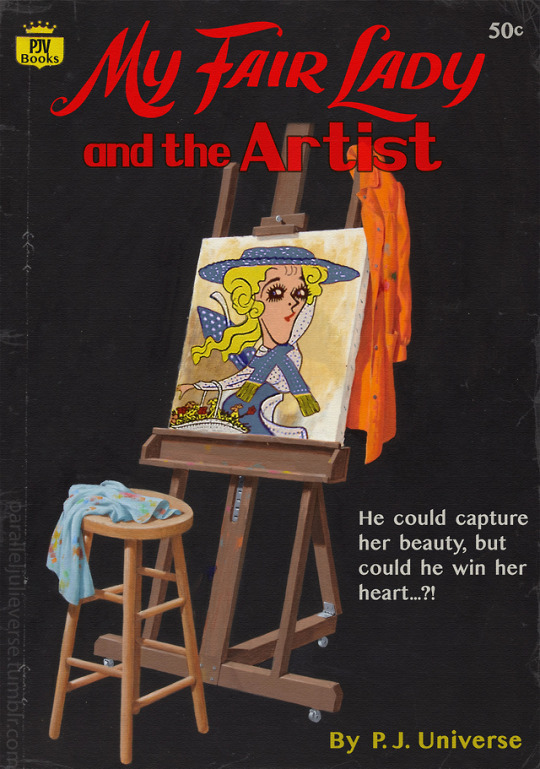
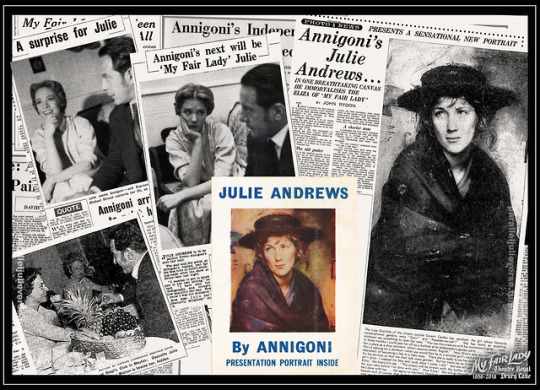
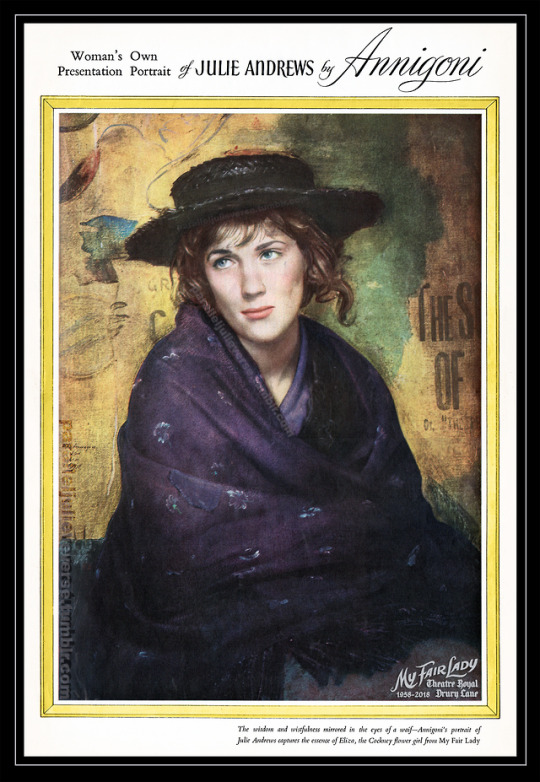
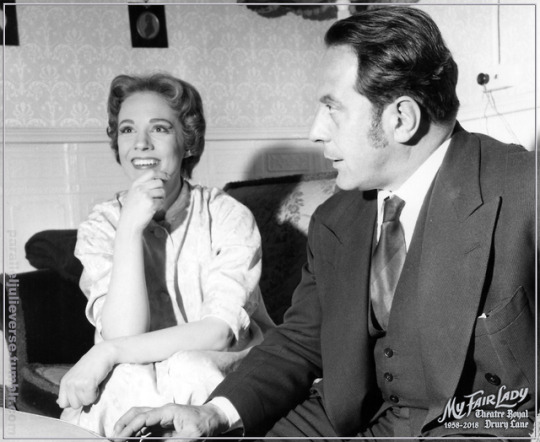
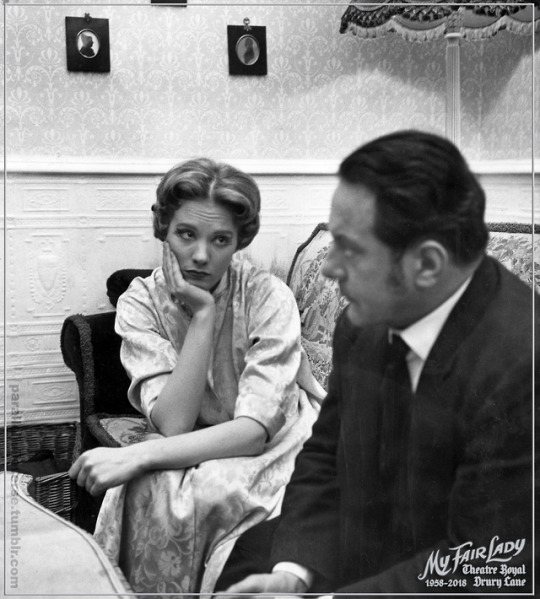
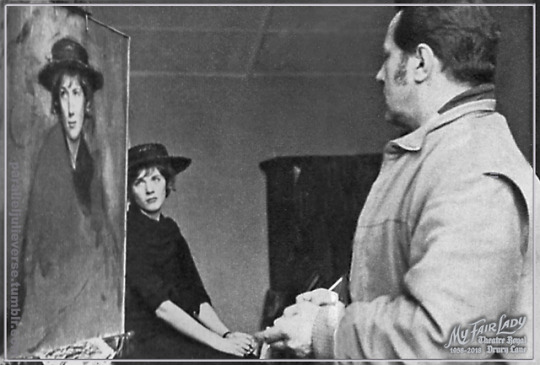


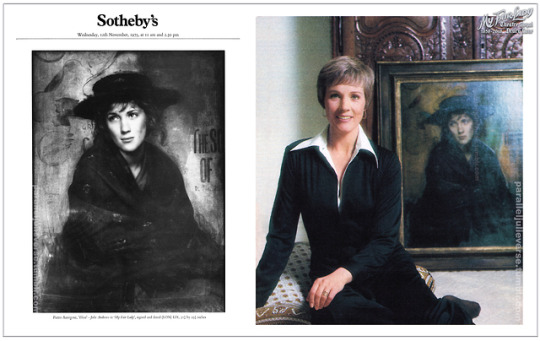
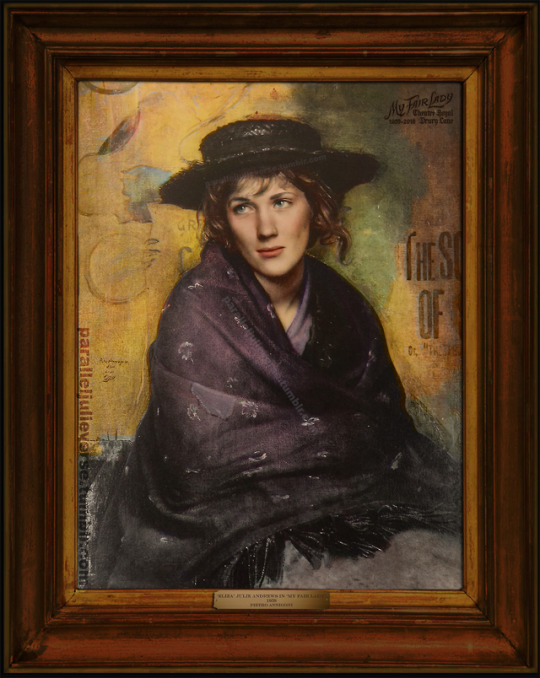
“One day I’ll be famous. I’ll be proper and prim...”
Sixty years ago, more or less to the week, the famed Italian painter Pietro Annigoni unveiled his latest masterwork: ‘Eliza’, Julie Andrews in ‘My Fair Lady’ (1959).
At the time, Annigoni was the most celebrated portraitist in the world. His dreamily romantic 1954-55 oil of Queen Elizabeth II catapulted the hitherto little known Italian painter to international fame (Wynne-Morgan: 17). Almost overnight, Annigoni became "the most sought-after portrait painter of the decade” (Shearer: 4) attracting a glittering line-up of celebrity subjects including Princess Margaret, Prince Philip, the Duchess of Devonshire, the Shah and Empress of Iran, the Maharani Gayatri Devi of Jaipur and Margot Fonteyn. His services were so in demand that he reportedly “had to refuse thousands of commissions –– 90 out of every 100 ––as the queues of VIPs waiting to be immortalised stretched around the world” (Turner: 8).
It was against this backdrop that Julie Andrews’s longtime manager, Charles ‘Uncle Charlie’ Tucker, approached Annigoni in 1958 with an invitation to paint his client who was riding triumphant at the time as the star of My Fair Lady. Tucker made the approach via a mutual friend –– Max Farber, an American newspaper editor and PR man who handled publicity for Annigoni’s first US exhibition in 1957 (Randolph: 6) –– which no doubt helped seal the deal (”Surprise”: 7). In his memoirs, Annigoni (1977) recalls:
Although I hardly knew who Julie Andrews was then, I agreed, but nearly a year went by before I was able to start the portrait. On the day I arrived in London, the manager Charles Tucker, took me to see the show and to meet the young actress. I was pleasurably surprised by both and decided there and then to paint her in the costume and character of Eliza Doolittle, the show’s Cockney flowergirl (121).
The meeting of these two disparate celebrities –– the serious, gruff Continental painter and the trilling English Rose –– was the stuff of PR dreams and it drew considerable media attention. “There’s no need to say she is very pretty,” Annigoni is reported to have remarked as he sized up his subject in her backstage dressing-room, “But I expect I shall need some 30 sittings before I am satisfied” (”Surprise”: 7).
In the end, Julie went to sit for the artist at his Chelsea studio exactly 28 times between April and June 1959 (Rydon: 5). Following these sessions, Annigoni would continue to work on the painting for hours, often late into the night. Ever the perfectionist, he even arranged for a copy of Julie’s flower-girl costume to be sent over from Drury Lane and worn by a model so he could hone the finishing touches (ibid.).
Throughout the more than two month period of the portrait’s production, Julie continued to perform in My Fair Lady, as well as prepare for her wedding to Tony Walton in mid-May. It was a pressured schedule that inevitably led to the odd timing mishap, a source of great irritation to the exacting Annigoni. When, on one occasion, Julie arrived at his studio more than twenty minutes late, the artist was so enraged he refused to answer the door, necessitating a diplomatic flurry of contrite telephone calls to smooth his ruffled ego (Andrews: 258; Annigoni: 121). “He was an arrogant man,” Julie recounts, “the epitome of the temperamental artist” who “demanded total dedication and punctuality” (Andrews: 258).
For all his irascibility, Annigoni in his memoirs looked back fondly on Julie as “a very sweet girl” (Annigoni: 121). He was especially grateful when, after complaining of a pain in his right arm, Julie arranged for a special house call from Tony Walton’s doctor-father who diagnosed “a cracked humerus” and “treated it successfully” (122). Annigoni was, by all accounts, equally pleased with the portrait itself, quietly considering it to be one of his finer works (Rydon: 5).
Once the commission was complete and the portrait delivered, the enterprising Tucker set about negotiating the sale of reproduction rights to select newspaper and magazine outlets. It was a canny move that not only helped recoup much of the initial £2000 commission fee but ensured optimal publicity for both the portrait and its star (Annigoni: 122). Images of the painting were carried in the international press as far away as Australia (“Annigoni’s Fair Lady”: 122). In October, Tucker licensed Woman’s Own –– a high-circulation magazine that had previously published several stories on Annigoni –– to run a lavish full-colour centrefold “presentation copy” of the portrait (”Star Feature”: 29-31). This special issue was strategically timed to coincide with the PR lead-up to Julie’s four-part BBC TV series in November/December 1959, the first episode of which featured Annigoni as a celebrity guest (Cottrell: 126). Tucker also floated plans –– ultimately unrealised, alas –– for future portraits of Julie as Guinevere in Camelot and “all the different characters of every show she has been in” (Private Correspondence to Max Farber, 21 April 1959; see also “’My Fair Lady’ Star”: 4).
As with much of Annigoni’s work during this period, the Julie Andrews portrait was well received by the public and middlebrow commentators –– “a breathtaking canvas” (Rydon: 7); “surely will rank...in the future with the famous ‘Mona Lisa’" (Cartmel: 16) –– but it proved far less pleasing to ‘serious’ art critics. Indeed, for the most part, the arts intelligentsia of the day took a pretty dim view of Annigoni. The artist’s predilection for representational classicism, coupled with his vocal opposition to then fashionable traditions of abstract modernism, made him an "isolated anachronism” in the post-war arts scene and a frequent target of critical scorn (Turner: 8). Many critics dismissed Annigoni as little more than a technically-accomplished draughtsman, a “purveyor of Old Masterish pastiche” (Rogers: 96).
When the Julie Andrews portrait was shown at the annual Royal Academy Summer Exhibition in 1960, many reviews were openly derisive. “I suppose it has a faded Victorian charm,” sniffed The Observer (Clutton-Brock: 19). “Signor Pietro Annigoni’s Julie Andrews in My Fair Lady...belong[s] in every fibre to the times and dull skill of late Victoriana,” echoed the Daily Mail (Jeannerat 1960: 7). While The Stage huffed: “With his oil of Julie Andrews in My Fair Lady, Pietro Annigoni could not have been more conventional and unexciting if he had tried with all his might” (”Not Much”: 21).
The intervening passage of time and the resurgence of interest in figurative portraiture has afforded a less jaundiced view of Annigoni and his place in art history. Following the artist’s death in 1988, his work was subject to a growing critical reassessment that saw him redeemed as an important figure of twentieth-century ‘classical realism’ (Lack: 50-59). A 1995 feature-length documentary mounted a passionate defence of Annigoni as “a prolific and complex artist...a philosopher with the skill to capture a person’s soul” (Bond and Smith). Major retrospectives of his work have since been held around the world and in 2008 a dedicated Annigoni museum was inaugurated in the artist’s native Florence.
It is a context that encourages renewed consideration of Annigoni’s portrait of Julie Andrews as a serious artwork. Pace knee-jerk dismissals of it as mere decorative Victoriana, close reading reveals that, beyond the attractive veneer –– what one critic sneeringly termed “the prettiness of the chocolate-box” (Jeannerat 1961: 3) –– lies a work of considerable intelligence and interpretive depth. For all his technical realism, Annigoni approached the practice of portrait painting as effectively that of an expressive character-study. “I have always painted to please myself,” he declared, “and interpret the sitter as I see and understand [them]” (Shearer: 4). A good portrait needs to be accurate but also communicative, he believed, an expression of character and moral quality beyond the mere impression of outward appearance. It’s an approach that orients his portraits to structural and conceptual duplexity: “he captures the soul of beautiful women...but he also catches the deeper side” (Sullivan: 92).
Here, it is worth recalling the ‘official’ title of Annigoni’s portrait of Julie: ‘Eliza’, Julie Andrews in ‘My Fair Lady’ (Jackson: 84). It suggests that, far from a simple depiction of a single physical subject, the portrait is in fact a complex study of plural subjects. It ‘portrays’ Julie Andrews –– in technically consummate, if idealised, likeness –– but in the guise of Eliza Doolittle, a celebrated character as reimagined in a contemporary hit musical. There are thus three interacting spheres or layers of representation in the work: real person, fictional character, and theatrical role. Looking at the portrait, the observer’s mind moves inexorably between all three, posing an interpretive conundrum: are we looking at an actress in character or a character as realised by an actress?
Taking the idea of layering further, the portrait, like much of Annigoni’s work, is quite literally a work of layers. As part of his commitment to traditionalism, Annigoni was noted for his exacting use of Quattrocento production techniques. Chief among these was the practice of tempera grassa whereby an artwork is painstakingly created on a chalk-gessoed panel through composite layers of pigment mixed with a binding agent, typically egg and oil, interspersed with coats of lacquer (Cookson: 43ff). It is a labour-intensive form of stratified image-construction that lends Annigoni’s paintings their characteristic luminosity with dynamic hues and complex interplay of shadows and light. It also enhances their disarming trompe l’oeuil effect where minutely detailed realism –– limpid eyes, flesh flushed with sanguine warmth, textured fabric–– and precise geometric perspectivalism combine to simulate a sense of perceptual depth that draws the eye in and across the painting’s spatial field and its various objects (Hoopes: 21).
Annigoni’s portrait work is equally characterised by a parallel layering of compositional form. Much like his Renaissance masters, the artist typically sets his subjects in and against a background rich with symbolic import. His celebrated 1954-55 painting of the Queen, for example, was as famous for its romantic depiction of the young monarch resplendent in her ceremonial robes as for the fact that she appears Diana-like towering triumphant over a sylvan English landscape at misty dawn, gazing into “the light of...a new Elizabethan age” (Wynne-Morgan: 17).
In the case of the Julie Andrews portrait, Annigoni chose to depict his subject against a backdrop of peeling theatre posters. Such was the importance of this background to Annigoni’s vision that he reportedly scoured London to obtain historical playbills from the very date Shaw’s original production of Pygmalion, the source text for My Fair Lady, opened at His Majesty’s Theatre on April 11, 1914 (Rydon: 5). Cracked and peeling in burnished hues of faded gold and green, the backdrop is clearly redolent of age and historical memory. In fact, the curled strips of paper look not unlike autumn leaves falling with the passage of time. Combined with the work’s classical style and bronzed patina, it strikes a decided note of wistful, even melancholic, longing. But what redeems the endeavour from being a simple exercise in sentimental nostalgia –– a common criticism of Annigoni’s work –– is that this elegiac reference to times-gone-by sits within a broader frame of markedly mixed temporalities.
In a way that neatly parallels the painting’s fusion of representational levels mentioned above, the portrait conjoins past, present and future in convoluted, and ultimately irresolvable, ways. Out of the golden past of Edwardian theatrical history, Shaw’s Eliza –– herself a resurrection of the ancient Greek figure of Galatea –– is reborn anew in My Fair Lady, the contemporary hit show of the painting’s ‘present’ in the late-1950s. That she is embodied here in the form of Julie Andrews, a then-tender 23-year old on the cusp of global superstardom, adds additional layers of futurity to the mix –– as does the fact that Annigoni chose to paint Julie in Eliza’s early flower-girl guise where she is still dreaming of an as-yet-unknown “loverly” tomorrow.*
The multi-levelled temporality of the portrait was not lost on commentators at the time of the painting’s unveiling:
Annigoni has painted Julie Andrews, who created the leading musical ‘My Fair Lady’ but it is Shaw’s eternal Eliza (46 years old next year––the first performance was in April 1914) who shines through...The portrait was commissioned by Miss Andrews’ manager, Mr Charles Tucker. The woebegone waif, clutching her purse shawl, with her melting mouth and a tear n her cheek, will hand in house. Until he dies. He has willed the portrait to Miss Andrews, a legacy of her first fame (“Annigoni’s ‘Fair Lady’”: 122).
This 1959 prediction as to the ‘future’ of the portrait was close to the spirit, if not quite the letter, of what transpired. After hanging for many years in Tucker’s London office, the painting was eventually put up for auction at Sotheby’s in late-1975 where it generated considerable interest (Hickey: 9).* Following spirited bidding, the painting sold at fall of hammer to an anonymous bidder for £7000 (£60,000 in inflation adjusted prices) (Jackson: 84; Walker: 11). The bidder was subsequently revealed to be a proxy advocating on behalf of Blake Edwards who had bought the portrait as a gift for his wife. So, in the end, ‘Eliza’, Julie Andrews in ‘My Fair Lady’ came back full circle to its subject who, in her own words, is “thrilled to own it and it hangs in my home” (Andrews: 258).
Notes:
* Some commentators have pointed out that the portrait contains another coincidental allusion to the star’s future as one of the playbills glimpsed in the background appears to spell out the half-hidden words: The Sound of... “How prophetic!” notes Julie (Andrews: 258).
** Several sources, including Annigoni himself (1977: 122), state that the painting was put up for sale by Tucker’s widow after his death. The Sotheby’s catalogue does indeed list “Mrs Charles L. Tucker” as the lot consignor but Tucker was still alive in 1975––he passed four years later in 1979––so his wife’s name was possibly used for taxation purposes (”Obituary”: 6). In her memoir, Julie alludes to the fact that she and Tucker had a gradual professional alienation which resulted in a change of management sometime in the mid-60s (Andrews: 221). She also mentions apropos the auction that: “I heard that Charlie asked whether [the portrait was being bought] on my behalf, and he seemed happy when the fact was confirmed” (Andrews: 258).
Sources:
Andrews, Julie. Home: A Memoir of My Early Years. London: Weidenfeld & Nicolson, 2008.
Annigoni, Pietro and Wright, Robin. An Artist’s Life. London: W.H. Allen, 1977.
“Annigoni’s Fair Lady.” The Sydney Morning Herald. 11 October 1959: 122.
Bond, Richard and Smith, Stephen. Annigoni: Portrait of an Artist [DVD], Italy/Canada: Artatak/Rainbow Films, 1994.
Cartmel, Frank B. “Splendid.” Daily Express. 1 October 1959: 16.
Clutton-Brock, Alan. “New Non-Conformists.” The Observer. 1 May 1960:18-19.
Cookson, Dawn. Painting with Annigoni: A Halcyon Decade as a Student in Florence 1958-68. London : Unicorn Press, 2000.
Cottrell, John. Julie Andrews: The Story of a Star. London: Arthur Barker, 1968.
“Fair Deal.” The Guardian. 13 November 1975: 6.
Hickey, William. “Under the Hammer: Annigoni’s Fair Lady.” Daily Express. 29 October 1975: 9.
Hoopes, Donelson F. Pietro Annigoni: A Retrospective Exhibition. New York: Brooklyn Museum, 1969.
Jackson, Anne, ed. Art at Auction, The Year at Sotheby Park Bernet, 1975-1976. New York: Rizzoli, 1976.
Jeannerat, Pierre. “Christ at Cookham...the Epitaph of Genius.” Daily Mail. 29 April 1960: 7.
_________. “Just Chocolate (Annigoni flavour) Likenesses.” Daily Mail. 26 April 1961: 3
Lack, Richard. "Classical Realism: The Other Twentieth Century," Utne Reader. July /August 1989: 50-59.
Laws, Frederick. “Annigoni’s 1961 Old Masters So Depressing.” Daily Herald. 26 April 1961: 39.
McIlhany, Sterling. “Pietro Annigoni: Contemporary Florentine Master.” American Artist. 36: 359, June 1972: 24-30.
“’My Fair Lady’ Star Seen as Fairest of Them All.” The Age. 18 November 1959: 4.
“Not Much at the Academy.” The Stage. 5 May 1960: 21.
“Obituary: Charles L. Tucker Dies; Impressario [sic].” Hartford Courant. 14 May 1979: 6.
Randolph, Nancy. “Chit-Chat.” Daily News. 11 December 1957: 6.
Rogers, Malcolm. From Elizabeth I to Elizabeth II: Master Drawings from the National Portrait Gallery. London: Art Services International, 1993.
Shearer, Lloyd. “The Ladies Love His Portraits.” Parade. 5 January 1958: 4.
“Star Feature: Annigoni’s Portrait of Julie Andrews.” Woman’s Own. 3 October 1959: 29-31.
Sullivan, Robert. “Pietro Paints the Queen.” Daily News. 5 June 1955: 92.
“Surprise for Julie: Annigoni arrives to paint her.” Daily Express. 16 April 1959:
Turner, Francesca. “Annigoni: Isolated Anachronism.” Evening Post. 9 May 1977: 8.
Walker, John. “Meet...Understated Superstar.” Observer Magazine. 6 June 1976: 10-11.
Welles, John. “Meet Julie Andrews: Understated Superstar.” The Observer Magazine. 6 June 1976:
Wynne-Morgan, David. “Painter of the Queen: Annigoni, a Dazzling Story of Success.” The Age Literary Supplement. 15 December 1956: 17.
Zeri, Federico. Italian Paintings: Florentine School: A Catalogue of the Collection of the Metropolitan Museum of Art. New York: MMA, 1971.
© 2019 Brett Farmer All Rights Reserved
#julie andrews#Pietro Annigoni#My Fair Lady#eliza doolittle#portrait#artist#charles tucker#musical theatre#west end#Broadway#1959#art#painting
20 notes
·
View notes
Text
melindax
replied to your post
“The alternate Enchanted Forest is clearly about French stories...”
Well they established that different lands, time goes by differently? It's why Belle aged so quickly and Emma and Killian's child hadn't even been born yet?
They actually never established that for real. The time Cora spent in Wonderland, as well as Jefferson didn’t alter the time on his own realm. Same as any other realm except for Neverland, where time doesn’t pass within but it does without, or the Dark Realm, where time passes faster (just not much faster). The problem is that Once Upon a Time writers and creators, liked to work with numbers, and always the same numbers: 28, 7, etcetc.
So, Hope wasn’t born because the curse that Drizella cast sent them to the past within the land Storybrooke was, as proven when Robin and Alice travel in the finale and find that Henry just graduated the day before, or Henry calling himself within the previous (i think it was the previous) episode and precisely telling himself to leave. The fact that HEnry left Storybrooke to the New Enchantd Forest is in itself a paradox, which is why, once the last curse is cast on the finale, Wish!Henry is there and adult Henry with his family, because the kid Henry is making it possible.
Bella and Rumple technically have a long life in our mind because we have the imagery of people dying of old age at a really old age. But that’s because we have medicine and whatnot. Belle and Rumple live travelling around. HEnce the scene of Rumple trying to get rid of the Dagger is set 10 years after the season 6 finale (because Gideon is 10 years old), whereas Gideon leaving is early twenties (Since he’s going to an academy, this is an asumption but i doubt he’d be much older) and they’re living in the library of scrolls.
Library of Scrolls is a location. It appears in the fourth episode of the seventh season. The Library of Scrolls is a big library where Belle, Mr. Gold and Gideon research information about how to free Mr. Gold from the darkness. However, it is not known if Belle and Mr. Gold actually own it.
Belle continues to age normally, and there’s been several years after they left in the first place, not after Gideon left them. Because when Belle dies, Gideon, same actor, is present. Gideon can’t be more than 32at the time (basic assumption).
At the same time, Henry is 34 or so when Lucy is 6 years old, because 28 is the year that is set at Henry arriving. So here they are coming with maths problems due to the need of recastin henry with an older actor (since Jared left the show or wanted to leave it more prominently rather than being in it for every episode).
Anyhow, is hard to keep up with it but basically: the time didn’t pass differently, it’s just by the time Hope is around a year old the last scene takes place, several months after the curse was cast. It is hard to know if becuse of how the curse was cast, they chose to pick up Emma pregnant because originally, Emma wasn’t going to have Hope in the inale to begin with so if we follow the actual time line: Emma was not pregnant when the curse took Storybrooke and united all the Realms (Including, btw, DRizella and Anastasia who are not seen but technically should be there, as well as the Evil Queen as she was also there, Phillip or Aurora and everyone who was left behind because Regina took everyone). But since they wanted to end the show with Hope which is the motor of the series, they took that little time bubble thing that puts Emma being weeks pregnant when Henry meets Ella onto the not so pregnant Emma because Henry was meant to not be that way.
So going back to Gothel which was the primary problem: technically Gothel was in the New Enchanted Forest, as she delved there and only there. Rapunzel is from there, after all. So is the witch in the divination Ball. And every character that is not from Wish Realm nor Storybrooke’s curse. The state of “before this land lost its magic” was probably an understatement because, technically, the land should’ve lost its magic openly in the Renaissance, (and the Renaissance are theclothes those characters are wearing in that flashback) but that’s not 1000 years before the events of the show, but 600 at much (since the Renaissance begins in Italy in mid 1400 (or the quattrocento), because technically Hyperion Heights curse is set in 2020 (Henry being 18 when he leaves Storybrooke, while being born in 2001) It should be a different land then, as if we count the 2020 year as beginning of Henry’s own story and sum up the adventures he had with Jack as an still teenager, then meeting Ella because before meeting Ella he had been world jumping assumingly (otherwise recasting with a much older actor makes 0 sense), which should be around 15-20 more years. The events in the New Enchanted Forest before the curse should be set in 2040 within Storybrook standards so still very much far from 1000 years and when Emma and Regina meet him again in there and iti ss revealed that Emma is pregnant, they both noticed how much he had grown up.
Further more, in the moment Alice and Robin travel, Robin in Zelena’s car is 6 years old. That’s why the beginning says 6 years after when Lucy knocks on the door. Because for Storybrooke events only 6 have passed, but in reality muuuuch more has.
Eitherway, That’s why Gothel can’t be from the Land without Magic. If Seraphina was at least 1000 years old she wouldn’t be wearing a blue pompous dress like because this is Renaissance clothing. And this is a Renaissance building. Impossible for it to be the time it should be for 1000 years of difference within the Land Without Magic. Unless she comes from a different, very different realm without magic. Lastly, but not least, they travel through a portal. Which implies that it actually happens in a whooole different realm.
So she might be a 1000 years older, but from a different land. Landing a 1000 years into the past of the New Enchanted Forest events rather than the Land Without Magic. Making Gothel Mother Nature, surely, and a nymph, but not from our world, but a different land, and Seraphina a witch fromt hat world, as magic seems a weird talent in that earth as well.
Hope it makes sense lol I’ve tried to write it during the episode and couldn’t XD
1 note
·
View note
Text
The “Noteworthy” Furniture Painter, Apollonio di Giovanni
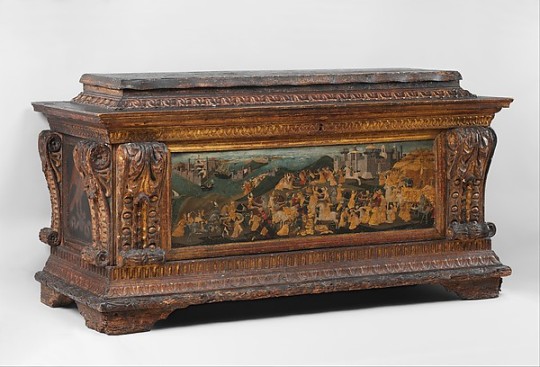
In a poem discovered by the eminent art historian, Ernst Gombrich, Ugolino Verino (the quattrocento humanist and poet), lavished praise on one of Florence’s most prolific cassoni painters, Apollonio di Giovanni.
In 1446, Apollonio is documented as being master of his own Florentine workshop, which specialised in the figurative decoration of furniture and household objects. The classical themes, often depicted by Apollonio, would likely have appealed to Verino’s humanist sensibilities and accordingly, he produced the following panegyric.
Ugolino Verino, “On the Noteworthy Painter Apollonio.”
In former times Homer sang how the walls
Of Phoebus’ Troy were burnt by the Greek Pyres,
Eloquent Virgil’s great work as well
Proclaimed the Greek cheats and Troy’s destruction,
But surely the Tuscan Apelles, Apollonius,
Now has painted Troy burning better for us!
Painting the flight of Aeneas and the anger
Of evil Juno, the tossed rafts, with much skill.
And Neptune’s threats, as he shoots through the tall seas,
And checks the waves, turned from the swift winds,
Painted how Aeneas, with faithful Achates beside him,
Entered the Phoenician woman’s city, disguised.
And his departure, and wretched Dido’s funeral,
The painted panel shows by Apollonio’s hand.




References: Creighton E. Gilbert, Sources and Documents in the History of Art Series: Italian Art 1400-1500, New Jersey, Prentice Hall, 1980.
Colum Hourihane, ed., The Grove Encyclopaedia of Medieval Art and Architecture, Volume I, Oxford, Oxford University Press, 2012, pp.123-124.
Gordon Campbell, ed., The Grove Encyclopaedia of Decorative Arts, Volume I, Oxford, Oxford University Press, 2006, pp.204-205.
Images: Attr. the workshop of Apollonio, Cassone with painted front panel depicting the Conquest of Trebizond, after 1461, poplar wood, linen, polychromed and gilded gesso with panel painted in tempera and gold, Metropolitan Museum of Art, New York. Public domain image.
The Shipwreck of Aeneas, 1450-60, tempera on panel, Yale University Art Gallery. Public domain image.
Darius Marching to the Battle of Issus, 1450-1455, tempera on panel, Rijksmuseum, Amsterdam. Web Gallery of Art.
Tournament in the Square of Santa Croce, Florence, c.1440, tempera on panel, Yale University Art Gallery. Public domain image.
The Meeting of Solomon and the Queen of Sheba, 1440-1450, tempera on panel, Yale University Art Gallery. Public domain image.
Posted by Samantha Hughes-Johnson.
59 notes
·
View notes
Photo
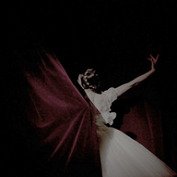
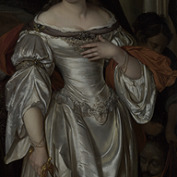

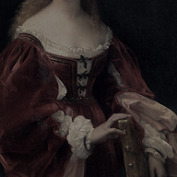


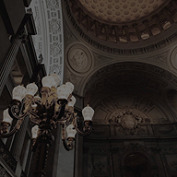


archive moodboards | @therepublicofletters
queen of the quattrocento
happy birthday emma!
#i saw that it was your birthday so i thought i'd make you this? hope that's okay!#and i hope you have a lovely birthday!#mine#*#archive moodboard#therepublicofletters
91 notes
·
View notes
Photo
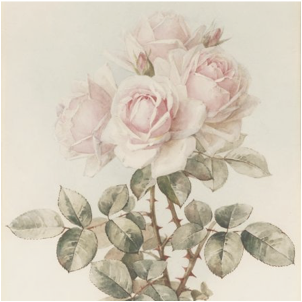



I’m Back 2x2s: therepublicofletters
Queen of the Quattrocento
[want one?]
1K notes
·
View notes
Text
Renacimiento: El despertar del arte (Parte 2) - Arquitectura

Continuando con nuestro blog del Renacimiento, en esta segunda parte abordaremos la arquitectura. Primeramente, para ubicarnos en el tiempo, describiremos las etapas del Renacimiento.
Etapas del Renacimiento
La Historia de la Arquitectura del Renacimiento, como un todo, suele dividirse en los siguientes tres grandes períodos:
Siglos XIII y XIV. PRE-RENACIMIENTO O TRECENTO. Coincide con el período gótico europeo. Aunque lo novedoso en Europa aun es el arte gótico y bizantino, en Italia estas concepciones artísticas, estrictamente enmarcadas en el acto religioso no tienen mayor auge, no resuenan para ellos y por tanto no estaban dispuestos a ceder en su empeño por restaurar el antiguo concepto de belleza clásico.
Siglo XIV e inicios del Siglo XV: Quattrocento, momento en que se destaca la figura de Filippo Brunelleschi y Leon Battista Alberti. Es una arquitectura que aspira al Clasicismo y que pone los puntales teóricos de la canonización del estilo, que caracterizará al período siguiente.
Siglo XV e inicios del Siglo XVI: Cinquecento o fase del Alto Renacimiento, en el que destacan arquitectos como Donnato Bramante.
Siglo XVI: Manierismo, donde las individualidades de los arquitectos comienzan a sobreponerse al proyecto teórico clásico. Destacan maestros como Miguel Ángel, Andrea Palladio y Giulio Romano.
Arquitectura del Renacimiento
Orígenes
La arquitectura renacentista nace en Italia durante el Quattrocento. Sus características más importantes son:
Deseo de realizar edificios perfectos desde el punto de vista de "perfección técnica", basándose en cálculos matemáticos y geométricos, para obtener la máxima armonía y proporción.
Para ello toman como módulos el radio y el diámetro de una columna. Hay teóricos como Paccioti que hablan de la proporción áurea, que es la más adecuada para la construcción: 1 m. de alto x 1,6 m de ancho.
El efecto ascensional del gótico es trocado por la horizontalidad.
Tiene preferencia el espacio unitario. Es decir, se busca que desde el interior se pueda tener una visión total del edificio, sin importar el punto de vista del observador.
Se busca la belleza formal.
Elementos Arquitectónicos Renacentistas
Elementos sustentantes:Sustentante continuo: el muro recupera su valor como sustentante. Es frecuente que estén articulados con pilastras, líneas de imposta, etc.
Sustentantes discontinuos: se utilizan los órdenes clásicos, con preferencia por el corintio. También se usan entablamentos y frontones.
Elementos sostenidos. El arco que se emplea es el arco de medio punto. Como cubiertas, se emplean las planas con casetones o bóvedas (de cañón o de arista). La cúpula adquiere un especial protagonismo y va a ser una constante preocupación técnica de los arquitectos renacentistas.

Arquitectura renacentista en España
1ra etapa: Estilo plateresco
En España, el Renacimiento comenzó a insertarse en las formas góticas en las últimas décadas del siglo XV. El desarrollo del Renacimiento se produjo principalmente por arquitectos locales, se creó una corriente puramente española del estilo, que se vio influenciada por la arquitectura del sur de Italia. Este estilo español llamado plateresco, combinaba las nuevas ideas italianas con la tradición gótica española, así como la idiosincrasia local.
2ª etapa: Purismo
Con el paso de las décadas, la influencia del Gótico fue desapareciendo, llegándose a alcanzar un estilo más depurado y ortodoxo, desde el punto de vista del Renacimiento. El purismo se caracteriza por una mayor austeridad decorativa, que se limita a algunos elementos concretos, generalmente de inspiración clásica. Hay un cierto cansancio de la exuberancia decorativa a mitad del siglo XVI y se imponen los edificios de aspecto más sereno, armónico y equilibrado.
3ª etapa: Estilo herreriano
A mitad del Siglo XVI, la iniciación del Monasterio de San Lorenzo del Escorial como símbolo del poder de Felipe II de España por Juan Bautista de Toledo fallecido en 1567 y Juan de Herrera supuso la aparición de un nuevo estilo, que se caracteriza por el predominio de los elementos constructivos, la ausencia decorativa, las líneas rectas y los volúmenes cúbicos. Significa además la introducción de los postulados manieristas provenientes de Italia.

Arquitectura renacentista en Inglaterra
En Inglaterra el primer exponente de la Arquitectura renacentista fue Iñigo Jones (1573 - 1652), que había estudiado en Italia, donde la influencia de Palladio estaba muy extendida. Cuando Jones regresó a su país, comenzó con entusiasmo a construir basándose en el nuevo movimiento y diseñó edificios como la Queen's House de Greenwich 1616 y la Casa del Banquete del Palacio de Whitehall 1619. Estas construcciones de líneas sencillas y simetría fueron revolucionarias en un país donde aún se diseñaban edificios con ventanas partidas, almohadillado y torrecillas.

Arquitectura renacentista en Portugal
En Portugal, el estilo manuelino aunó los elementos renacentistas a las edificaciones góticas, y es considerado por algunos historiadores como la contribución portuguesa al Renacimiento, aunque su estética es muy distante del clasicismo (objetivamente debe insertarse en el tardo-gótico). Ejemplos de la arquitectura renacentista portuguesa son la Catedral de Leiria y de Portalegre, el Colegio Jesuita de Évora y la Iglesia de San Roque de Lisboa.
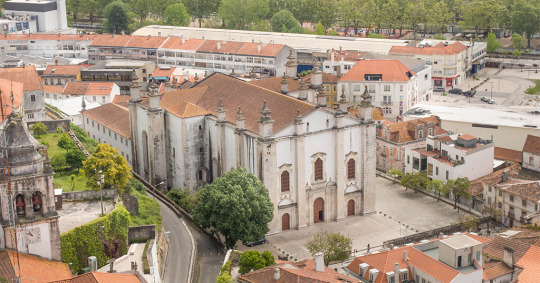
Obras Arquitectónicas Relevantes del Renacimiento
Palacio Davanzati
Fue construido en el siglo XIV por los Davizzi, familia burguesa florentina que se había enriquecido con el comercio de la lana y la seda. Fue el primer edificio de la ciudad que tuvo vidrieras en las ventanas. En el centro del patio, hay un pozo, un lujo para aquella época. Una escalera empinada, de piedra, sube a los pisos superiores. Son interesantes la Sala de los Papagayos y la de los “Pavoni” (pavos reales), las dos están completamente pintadas con frescos coloridos y ornamentales, y en las paredes se conservan las decoraciones originales.
El palacio, actualmente, tiene el nombre de sus terceros propietarios, los Davanzati, ricos mercaderes que reestructuraron el palacio. En 1951, el palacio fue comprado por el estado, que lo transformó en "Museo de la Casa Florentina". En el museo había muebles de época, cerámicas, utensilios domésticos y telas provenientes de otros museos florentinos. Hoy, los muebles se encuentran en el museo de Philadelphia.
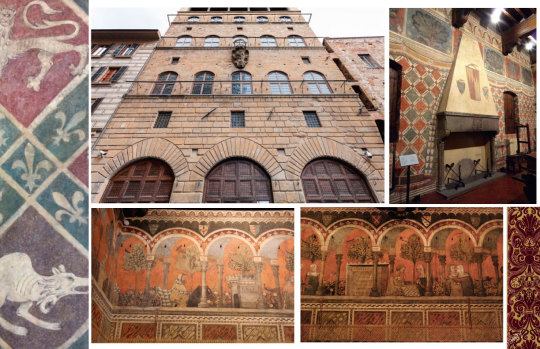
Palacio Medici
Este palacio se caracteriza por ser un edificio austero y sobrio, su diseño fue realizado por Michelozzo di Bartolomeo en el año 1444. Cosme de Médici fue quien ordeno realizar esta obra, siendo la residencia de la familia por más de cien años. Siendo en el año 1659 que pasó a manos de la familia Riccardi, quienes fueron los que le hicieron las reformas barrocas.
La imponente mole cúbica y la elegante fachada, con su almohadillado gradual, para dar esbeltez, y las ventanas ojivales con arcos se convirtieron en el prototipo oficial de la arquitectura civil renacentista.
PATIO DE MICHELOZZO (1444-1452). Construido sobre un proyecto de Michelozzo, el elegante patio renacentista se caracteriza por elementos clásicos.
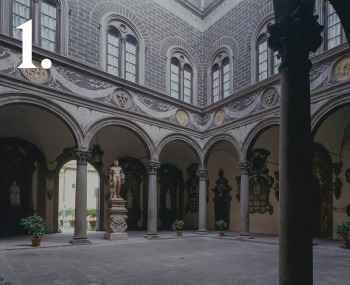
JARDÍN MEDICI. Un elemento esencial de la vida privada de la familia es la Limonaia, un área adornada con estucos y decoraciones del siglo XVIII.

CAPILLA DE LOS REYES MAGOS (1459-1561). La procesión de los Magos, magistralmente pintada al fresco por Benozzo Gozzoli, retrata a los miembros de la familia Medici con hombres ilustres.

VIRGEN CON EL NIÑO (1466-1469). La Madonna de Filippo Lippi, representada mientras se extiende hacia su hijo, se encuentra entre las últimas obras del maestro florentino.

GALERÍA LUCA GIORDANO (1682-1691). La decoración de los espejos dialoga con la majestuosa bóveda con frescos de Luca Giordano que representa la apoteosis de los Medici.

Basílica de San Andrés Mantua
Fue realizada por el arquitecto renacentista Leon Battista Alberti. La obra fue encargada por el II Marqués de Mantua, Ludovico Gonzaga. El templo debía albergar la reliquia más importante de la ciudad, la sagrada sangre de cristo, y dar cabida a los miles de peregrinos que llegan para adorarla.

La iglesia presenta una planta de cruz latina. Los laterales de la nave son horadados con seis capillas laterales que se presentan de forma alterna: mientras unas capillas adquieren un espectacular desarrollo en altura, están abiertas a la nave principal a través de un arco de medio punto y aparecen rematadas por una bóveda casetonada. Las alternas son pequeñas capillas cuyo acceso se realiza a través de una sencilla puerta adintelada sobre la que aparece un enorme ovalo como motivo decorativo.La nave da acceso a un crucero abovedado con un importante desarrollo en planta. Especial atención la enorme cúpula sobre pechinas que ocupa el espacio central. Alberti ideó la fachada de San Andrés con gran unidad y armonía. La zona central se articula como un gran arco de triunfo que sigue los modelos de la Roma imperial.
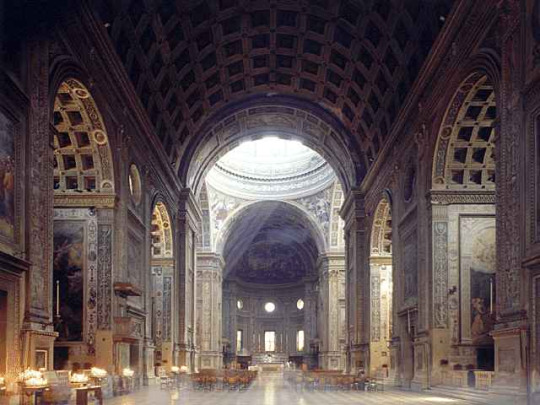
Biblioteca Laurenciana.
En 1524, Clemente VII – Giulio de Médicis- le encomendó a Miguel Ángel, la realización de una biblioteca para albergar el patrimonio literario de la familia. El arquitecto planteó un proyecto constructivo en dos espacios de diferente altura unidos por una bellísima escalera. La Sala de Lectura se configura como un espacio rectangular de pequeñas dimensiones. El suelo también presenta bicromía esta vez en rojo y blanco que otorga gran belleza al conjunto. La Biblioteca abrió sus puertas por primeras vez en 1571.
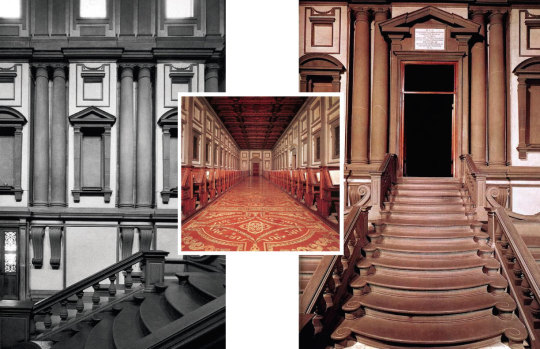
Sigue la tercera y última dentrada del Renacimiento, hablaré acerca del mobiliario.
Puedes ver más acerca de estos proyectos en los siguientes videos:
youtube
youtube
youtube
youtube
0 notes
Text
20 Sights of Romania
New Post has been published on https://tripsterguru.com/20-sights-of-romania/
20 Sights of Romania

Romania is a beautiful country with its own amazing and magical world, with beautiful and picturesque places, a number of attractions that are worth seeing and which are very popular among tourists from all over the world. It attracts with its ancient culture and beautiful nature. Any tourist will find a lot of interesting things for themselves: beautiful views of the Black Sea, Carpathian mountains, clean air, beautiful mountain springs, indescribable beauty, the famous Danube River, historical architectural structures. The sights of Romania can be found anywhere in the country. Each of them has its own story, and even legend. Many of them are nature reserves.
Peles Castle

On the way from Transylvania to Wallachia, on the orders of King Carol I, the Peles Palace was built, which is usually called a castle. It is 135 km from Bucharest. Its construction began on August 22, 1873 under the leadership of the German architect Johann Schulz. It was originally intended as the summer residence of the king and the place of hunting. The central entrance is decorated with a sculpture of King Karol I, who considered his palace to be the “cradle of the dynasty, the cradle of the nation.”
It was here that two Romanian kings were born: Carol II (in 1893) and Mihai (in 1921). The sculpture of his wife Elizabeth, depicted behind embroidery, is located in a secluded corner of the garden. The 3200 m² castle was designed in the Neo-Renaissance style. This building was the first castle in the world to receive electricity. For this, a power station was built on the territory. There are stables, houses for protection and hunting. The tower, 66 meters high, was crowned with a clock.
The interiors are decorated in baroque style. In total, the castle is equipped with 160 rooms, 30 bathrooms, a theater for 60 spectators. An elevator and an air-conditioning system with the help of sliding ceiling windows were built here. Workers from different countries worked on the construction of the castle. According to the estimates of Queen Elizabeth, they spoke 14 languages. In 1947, King Mihai was forced to abdicate, and the castle was confiscated. It hosted tourists, and then in 1958 a museum was created.
During the reign of N. Ceausescu, the castle was under guard, access to it was stopped. The resumption of the museum was short-lived. In 2006, he was returned to the rightful owner of the Romanian king Mihai. The government paid him 30 million euros, and the castle again became available for visits. At present, the castle houses the Historical Museum, the collection of which includes paintings and sculptures from Eastern and Central Europe, silver, gold, ivory, Sevres and Meissen porcelain.
The collected collection of medieval weapons and armor is amazing. There are more than 4000 exhibits in it. Carpets to decorate the interiors of the castle were woven in Bucharest, Mosul, Isparta and Smyrna. Leather goods delivered from Spain (Cordoba). Hand-painted stained-glass windows were brought from Switzerland. The park ensemble consists of seven terraces built in the Italian style. They are decorated with a large number of figures made of Carrara marble by the Italian sculptor Raffaello Romanelli, fountains, stairs. Open for tourists from 9 to 17 hours (Wednesday — Sunday). It does not work in November. It can be visited as part of an excursion group, they gather on the basis of the linguistic principle.
Bran Castle

Built at the end of the 14th century, it was intended for defense and the inhabitants themselves built it. It is located on a cliff 30 km from the city of Brasov and covers an area of 8 hectares. Inside, it has a complex staircase system that allows you to move between four levels. There is a well in the courtyard, which, according to legend, leads to underground rooms. For the construction of this defense fortress, local residents were exempted from paying taxes to the treasury for several centuries. During its existence, the fortress has repeatedly changed owners. But it was called Dracula’s castle, as the lord Vlad Tepes spent the night there during the campaigns and favorite hunting.
There is a legend that Turkish conquerors tortured him in the cellars of the castle. In 1918, the townspeople gave the castle to the Romanian Queen Mary. From that moment, it began to be used as a royal residence. In 1920–26, a grand restoration was carried out, during which a park with fountains, alleys and a private lake spread out on the estate. In 1948, the royal family left the palace; it came to desolation. But already in 1956, the Museum of History and Feudal Art opened at its base.
In 2006, a law was passed in Romania on the return of property to former owners, and the castle was returned to the heirs of the queen. But before that they took out all the historical furniture. Therefore, her grandson Dominique had to re-create the interiors and buy the appropriate environment. Local shops are happy to sell souvenirs related to Count Dracula. In addition, Bran is famous for local cheeses, the recipes of which are transmitted from generation to generation in great secret. Bran is a success with filmmakers around the world. So in 1994, the film “Interview with the Vampire”, shot on the territory of the fortress, was released.
Corvin Castle

Located near the city of Hunedoara, it was presented for outstanding services by the Hungarian King Sigismund to the Romanian military and political figure Janos Hunyadi. He decided to rebuild it and make it a family estate. The restoration was carried out in two stages. During the years 1441-1446, seven towers were erected, in 1446-1453 – a chapel, halls and utility rooms in the southern wing. The heir to the castle was Janos’s son – Matyash Corvin, who continued construction work in the chapel and in the north wing.
The architectural style of the castle includes Gothic elements in combination with fragments of the Quattrocento (early Renaissance). According to legend, the Transylvanian count Vlad Tepes was kept in the dungeons of the castle for seven years after the overthrow. Since 1508, the castle changed owners several times until it was in the hands of Gabor Betlen, who led the anti-Habsburg movement in the Hungarian kingdom. He reconstructed it in the light of the latest fortification requirements.
But in the 18th century, the Habsburgs still began to own it. With them, in 1854, a fire broke out in the castle, destroying the internal wooden finish. During the years 1868-74, reconstruction was carried out here, as a result of which the roof was tiled. During the communist rule, the castle was also reconstructed and opened to visitors.
Poenari

It is located in Arefu (rum. Arefu), a few kilometers from Lake Vidraru. Presumably it was built by Rada Negra, nicknamed the Black Governor. This is the semi-legendary founder of the Vlach state. At that time there was only one tower and a small garrison of guards. In the XV century it belonged to the famous gospodar Vlad Tepes, who did a lot to strengthen it.
He built four more towers, expanded the castle buildings. Traditions say that it was in him that Dracula tortured his opponents. After his death, the area began to fall into disrepair, which aggravated the earthquake in 1888. The last restoration work was carried out in 1972. At this time, they strengthened the masonry walls and built walkways with railings for the convenience of tourists.
Archaeological excavations have confirmed that the fortress in the bed of the Arges river has existed since time immemorial. She allowed to control the territory between Transylvania and Wallachia. To get to the ruins, it is necessary to overcome the 1480 stairs steep stairs leading to the mountaintop Cetatuia. On it is a platform from which, according to legend, the wife of Count Tepes, Elena, rushed into the gorge.
Romanian Athenaeum

In 1865, the Atheneum Society was founded in Romania, and in 1888, the construction of the building began with the funds of the Wallachian boyar clan Wakarescu. In addition, folk money collected under the motto “Donate one leu to the Athenaeum!” Was also used for its construction. This is a concert hall located in the capital of Bucharest. The author of the project was the French architect Albert Galleron. It is built in neoclassical style with romantic elements.
On the ground floor there is a meeting room, and on the second floor there is a visual for 600 seats (52 additional seats are located in the boxes). The interior of the auditorium is decorated with a fresco by the artist Kostin Petrescu depicting significant events in Romanian history. The painting was carried out for 6 years, starting in 1933. On April 22, 1939, a concert was given in honor of the construction of a concert organ.
Performed organ music by Franz Schutz, director of the Vienna Academy of Music and Performing Arts. In front of the Atheneum building there is a small park with a monument to the classic of Romanian poetry, Mihai Eminescu. Currently, the concert hall is considered a symbol of Romanian culture and is listed on the European Cultural Heritage.
Rasnov Fortress
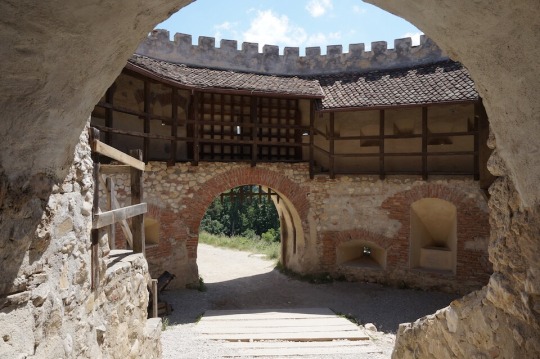
The fortress in the city of Rasnov was founded by the Teutonic Knights in 1215. It served to shelter the local population from numerous conquerors and was so fortified that it was conquered the only time in 1612 by the Transylvanian prince Gabriel Bathory. In the center is a well. A terrible legend is associated with it. During the siege by the Ottomans, the inhabitants lacked drinking water. Then they forced to dig two captured Turks another well with a depth of 62 meters.
They were promised freedom, but at the end of their work, which lasted seventeen years, the captives were killed. During restoration work, two human skeletons were actually discovered at the bottom of the well. Currently, the territory is freely visited by tourists. The fortress wall with towers and the foundation of the church remained from the fortress. A panoramic view of a two-story city and beautiful surroundings opens from the observation deck. From here you can also see Bran Castle.
Fun cemetery

The original cemetery is located in the village of Sepynets in the Maramuresh County. His tombstones are made in bright colors and have original inscriptions in poetic form. They reflect the life path of the buried villagers. This idea of the cemetery belongs to Stan Jon Patrash, a local wood carver. He was the first in 1935 to carve and erect a cross with a cheerful inscription. Over the years, more than 800 such crosses have been installed on the graveyard, and it itself has turned into a museum that tourists like to place. There is an inscription on the grave of the camp itself. It says: “In my entire life I have not done harm to anyone …”.
Mud Volcanoes

The Vulcanii Noroiosi Nature Reserve was created in the 1920s near the town of Buzau, located about 100 km from Bucharest. They arose on the territory of an abandoned mine. In 1977, an earthquake occurred in Romania, and the special activity of volcanoes began to appear. As a result of the exhaust gases, dirt and salt water are emitted to the surface. They freeze under the sun and form peaks resembling craters.
Currently, four such volcanoes are constantly operating, and twelve – periodically. Originality is given to the couple by the green hills surrounding the reserve. Between the craters are frozen flows. Their cracks on the surface of clay soil reach 5 cm. You can freely enter the territory of the reserve and spend several days in a tent camp or as part of an excursion group.
Scarisoara Cave

The Bihor Mountains are 134 kilometers from the city of Cluj-Napoca. They discovered a cave 1 km long, which was formed about 3,500 years ago as a result of glaciation. Scarisoara was first mentioned in 1863. Then the Austrian geographer Arnold Schmidl drew her map. In a grotto located in the mountains underground, a glacier is discovered, which gradually disappears as a result of melting. Stalagmites found in the halls resemble church candles.
Therefore, the cave is conditionally divided into halls called the Great Hall, Church, and Cathedral. Currently, the cave is equipped with metal and wooden stairs, which allows you to freely visit it. It is illuminated inside with carbide lamps. Some part of the cave is being studied by scientists. The temperature inside the grotto approaches zero. Therefore, when visiting attractions, you need to bring warm clothes.
Pelishor Castle

This is a small part of the Pelish complex, built in 1899-1903. It was intended as the summer residence of the heir to the Romanian throne, Ferdinand. The author of the Art Nouveau castle was the Czech architect Karel Liman. In the design of the castle, direct participation belongs to the wife of Ferdinand Princess Mary, who had a very delicate taste. She managed to successfully combine elements of the Art Nouveau style with Byzantine and Celtic symbols.
The castle has 99 rooms. They are decorated with furniture designed by Viennese designer Bernard Ludwig. In addition, the interiors were developed by him together with Queen Mary. Therefore, they have a special sophistication. In order to have a lot of light in the castle, the large windows and ceiling of the Main Hall are three floors high, decorated with stained glass windows. It is decorated with oak panels and decorated with portraits of the owners of the castle and their children.
Drimsim is the first universal sim card for travelers. Internet abroad starts at $ 1 per megabyte, and calls start at $ 3 per minute. Works in 197 countries!
Maria herself designed the furniture designs for the Golden Bedroom. It was made in 1909 in the workshop of the city of Sinai. In the Queen’s office is furniture with lilies and a Celtic cross – the symbols of the princess from Scotland. The cabinet of King Ferdinand opposite is sustained in strict German neo-Renaissance. The castle has a unique collection of works by contemporary masters of art nouveau, including designers Halle, brothers Daum, Hoffman, Tiffany, Gursner.
Sucevita Monastery
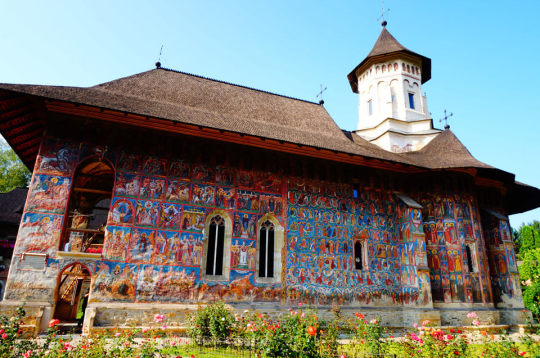
It is located in Bukovina, in the north-eastern part of the country. The nearest town of Radauti is 18 kilometers away. In 1585, it was built by brothers from the Wallachian clan Tomb of Jeremiah and Simon. The square-shaped monastery is surrounded by six-meter walls. To strengthen the corners of the tower built. In its architecture there are both Byzantine elements and Gothic. The structure inside and outside is completely covered with unique murals based on the Old and New Testaments.
They are made by Moldovan masters brothers Ion and Sofroniy with the help of a huge number of unknown masters. The unique internal painting serves the idea of spiritual renewal of a person through faith and pious deeds. In 2010, the monastery was inscribed on the World Heritage List. Currently, one of the walls is used for the museum, which houses a large exhibition of historical objects.
Mogoshoyaya Palace
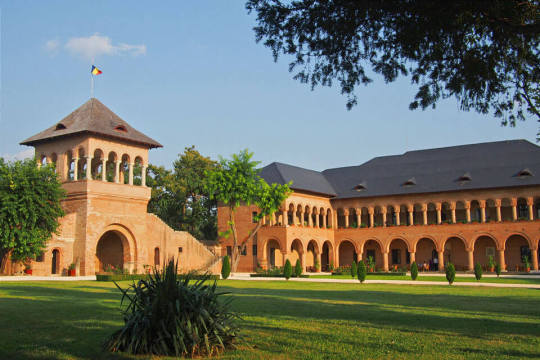
In 1698-1702, the Wallachian ruler Konstantin Brynkovyanu built a palace and park complex 16 km from Bucharest as the summer residence of his family. Constantine was the founder of a national architectural style that combined Venetian, Dalmatian and Ottoman elements. It contains numerous carved jewelry and decorative paintings. In 1714, the Ottomans executed Brynkovyan, and arranged a hotel in his palace.
Having recaptured it during the Russian-Turkish war, in 1853 the Russians arranged storage facilities for weapons in it. The princes Bibescu, who became the new owners of the palace complex, began its restoration in 1860-1880. They managed to recreate and decorate the palace, which they owned until the Second World War. In the 1920s, it belonged to the widow Marta Bibescu, who put a lot of effort into his restoration and opened a salon in it.
Its visitors were many famous people of the first half of the XX century, including Antoine Saint-Exupery. It was her name that began to be worn by the palace and park ensemble. Representatives of the princely family of Bibescu found reassurance in the church of the park. Despite significant restructuring of the 20th century, the palace has inherent basic elements of the national style. In 1957, the Museum of Brynkovets Art was opened here, including antique furniture and household items of the 17th-19th centuries, historical documents, icons and works of art.
Throne fortress
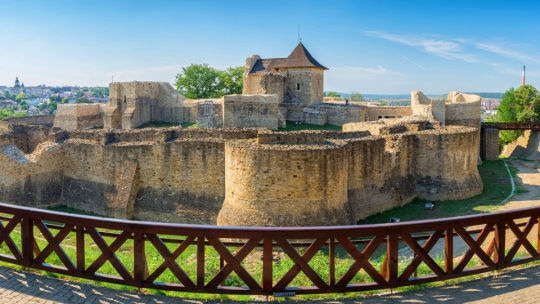
The fortress of the XIV century served as the place of coronation of Moldavian rulers. Located in the city of Suceava, it is currently a ruin. Restoration of the remains of the once powerful fortress began in 1961 and is still ongoing. The almost square fortress 40×36 meters had square towers. A water moat was dug around her. Its depth reached 10 meters. The fortress was founded by Peter I Mushat, but the greatest importance was under Stephen III the Great (Stefan cel Mare).
He strengthened two-meter walls of solid stone, built an additional defense system of walls 10 meters high, which was carried out 20-25 meters ahead. Inside, additional halls were built for members of his family. Its siege by the Ottoman forces was unsuccessful until in 1563 the self-proclaimed lord Stefan VII Tomsha took refuge in it. The mercenaries betrayed him and surrendered the stronghold to the Turks. After that, she was burned, passed from the hands of the proteges of the Turkish Sultan.
In 1675, by order of Dumitras Kantakuzin, she was blown up. Remains destroyed by an earthquake. The revival of the fortress began after archaeological research by the Austrian architect Karl Romstorfer at the beginning of the 20th century. But reconstruction began only in the 60s. Currently, the remains of the fortress can be visited for a fee.
Nyametsky fortress

During the reign of Peter I Mushat, the Nyametskaya fortress was also built. It is located near the city of Tirgu Neamt. Legends say that the Teutonic Knights first strengthened this place. They appropriated large territories in Transylvania and colonized Semigradier. The name Tirgu-Neamt is translated as “German bargaining.” Stefan the Great, preparing for the fight against the Turks, was engaged in strengthening the ring of fortresses, including Nyametskaya.
On his orders, its walls were increased by 20 meters in height and an outer courtyard was built, where artillery pieces were installed. A huge bridge was thrown across the moat, reminiscent of a Roman aqueduct and bridges of the 20th century at the same time. A well was dug in the yard to supply drinking water in case of siege. But neither the Ottomans nor the Polish commander Jan Sobesski could take her.
The Turks fell into the fortress only thanks to the conquest of Moldova, but did not begin to destroy. Left as an observation post. Currently, a small museum exposition is operating in the fortress. It presents household items of the defenders of the citadel. In 2007–09, reconstruction began. Thanks to her, a reliable road appeared for tourists placing this place, the infrastructure was improved, the architecture was updated.
Canyon Bicaz

In the Eastern Carpathians are rocks of the Bikaz gorge. It stretched between Moldova and Transylvania, and served as the only natural road. Bicaz is the deepest and longest gorge on the territory of Romania, the river of the same name shares its banks. Currently, it is a conservation area with almost sheer cliffs above an 8-km-long highway.
Taking pictures is allowed in certain areas. People driving along the highway are delighted with the surrounding beauty of nature. In 1961, a hydroelectric dam with a reservoir was built at the exit of the gorge. It is recognized as the largest Romanian lake. River trout is found in the waters of the Bikaz River, and red-winged sten climbers, considered rare birds, live on the rocks.
Ceahlau

One of the most famous mountain ranges is located in the Eastern Carpathians. It is located near Spring Lake Mountain in Neamt County. The highest points are Toaka (1904 m) and Okolashul-Mare (1907 m). The massif is surrounded by the Bistrita and Bikaz rivers, in the east – Lake Bikaz. In the national park is the monastery “Transfiguration”, and Mount Chahlau recognized as the second Christian mountain after Mount Athos. Many pilgrims flock here to visit the monks who took refuge at the top.
A beautiful legend is associated with the formation of mountains. According to her, the ruler of the Dacians of Decebal had a beautiful daughter, Docius. After the capture by the Roman emperor Trajan of Dacia, she went to the mountains of Chahlau, so as not to get to him. Here she grazed goats and froze. According to one version, the Virgin Mary turned her into a stream, and the sheep into beautiful flowers around. On the other, the girl turned into rocks. According to another legend, Emperor Trajan ordered the mountain to be poured in order to block the way for the barbarians attacking from the East.
Laku – Roshu

Near the Bikaz gorge there is a lake formed in 1837 at an altitude of 978 meters. One of the rocks was washed by heavy rains. Fallen stones formed a dam in the form of the letter “G” on the site of former pastures. The coastline of the lake is 2830 meters, and the depth reaches 10.5 meters. A beautiful fairy tale is associated with him. Nearby lived the girl Esther, whose beloved was drafted into the army.
She was very homesick, and often cried alone by the mountain stream. Here she was met by a robber and stole. The girl begged the mountains to save her, and nature took pity. The mountains shook, an earthquake killed everyone, including innocent shepherds. The collapsed rocks formed a lake with tree trunks sticking out of the water and hid the unfortunate Esther in their waters.
Canyon 7 stairs

The gorge got its name in the 20s of the XX century, when transitions for the local population were stretched here. They stretched for 230 meters with a height difference of 55-60 meters. It takes place as part of groups without special equipment. From time to time there are small waterfalls on the route, additionally spraying tourists with water.
Scientists attribute the formation of the canyon to the Jurassic period. It is assumed that its bottom is the base of the ancient sea, on the banks of which dinosaurs lived. In addition to the marvelous nature, legends ascribe miracles to the canyon. Young people, to test their future wives, invited the girls to walk along the bottom of the canyon. Thus, they figured out her stamina. Then the girls were invited to spend the night over it themselves, climbing seven stairs upstairs.
If during the test the young couples did not quarrel, but helped each other, a long happy life awaited them. And in our time there are daredevils repeating the teachings of an ancient tradition. The atmosphere of the gorge is filled with very ozonized air, which kills all conceivable infections, thereby contributing to a strong healing effect.
Retezat National Park

This is the first national park in Romania, founded in 1935. The main reason for the formation of the protected area was the desire to preserve the unique alpine vegetation. On an area of 381 km², located at an altitude of 2000 meters above sea level, traces of glacial lakes are preserved. It is here that the deepest Romanian Lake Zanoaga is located. At an altitude of 2509 meters is the peak of Peleaga Mountain.
1190 species of flora were found in the park, 90 of which are endemic. Alder, rhododendron, nibs, bluegrass, and hawk grow here. The reserve is the birthplace of many wild animals. Among them are brown bear, forest cat, lynx, wolves. A large number of birds live in it: a horned lark, a brown vulture, a rare golden eagle, a white-throated thrush, and many others. Because of them, the national reserve is declared a specially protected zone.
Piatra Craiului National Park
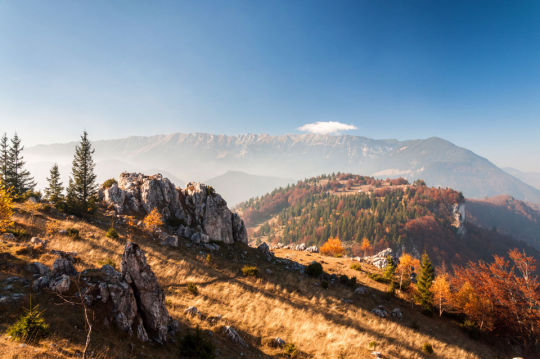
200 kilometers north of Bucharest in the Southern Carpathians is another interesting corner of Romania. The date of the formation of the protected area is considered to be 1938, which in 1990 became a national park. The total area of the reserve is 14,781 ha. Its karst landscape with the release of limestone rocks is distinguished by various representatives of the plant and animal world. Among 1170 species of vegetation, pine and willow, alder, hornbeam, and oaks are found.
48 species of members of the orchid family grow. Among the representatives of the living world of birds alone, there are 11 species. This is thrush, cuckoo, oriole, kayuki, golden eagle and many others. But there are only 3 species of fish: barbel, brook lamprey and sculpin. Walking routes are organized for any physical condition. They allow plenty to admire the beauties of Romanian nature: mountain gorges, valleys and glacial lakes.
Mountain range Rodna

Another Romanian mountain range near the Ukrainian border. It is formed by granites and crystalline rocks. Pyrite deposits were discovered here. On the territory of the massif is Rodna National Park with an area of 46599 ha. It was created in 2000 and represents a unique territory of glacial cracks and caves, valleys, forests and mountain pastures. Some of the inhabitants of the park are protected by law. Common mammals include brown bear, wolves, lynx, capercaillie and eagle.
Sarmizegetusa
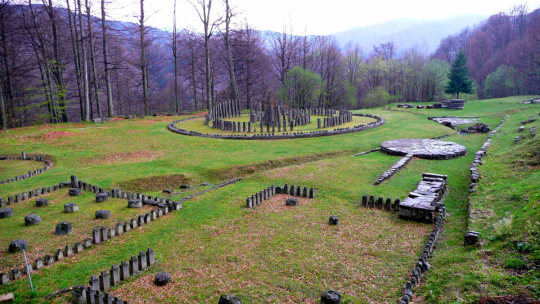
In the south-west of Transylvania was the territory of Dacia. The residence and its main military and political center was Sarmisegetusa, located on the hill of Gradistia-Munchelului. It received such an interesting name in honor of the ceasefire between the Sarma and Getae tribes. The last Dacian ruler Decebalus included it in his defensive system. It was destroyed by Roman troops during the campaigns. In 1999, the remains of Sarmizegetusa were included in the UNESCO World Heritage List.
The fortress was located at an altitude of 1200 meters above sea level, had a quadrangular shape and occupied 30,000 m². In addition to defensive significance, it was also a religious center, since it contained important shrines for the Dacians. It is assumed that the cave on Mount Kogayonon located here served as a shelter for the god Zalmoxis. At the top, several sacred shrines were discovered, the road to which is paved with tightly fitting parallelepiped stones. Ceramic pipes were laid into the houses located on the mountain terraces, through which water flowed. This led to the conclusion about the high culture of life of the Dacian tribes.
Vidraru Dam
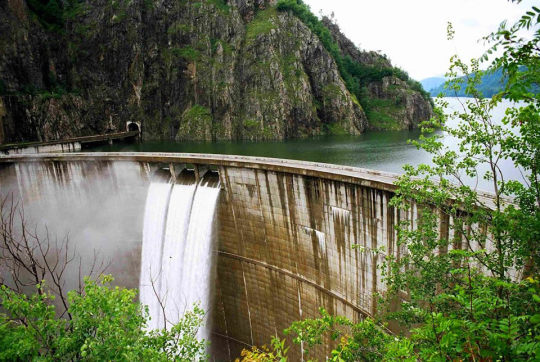
In 1961-66, a dam was built on the Arges River, flooding the village of Arges Arefu. The area of the artificial lake is 870 ha. It is the highest dam in Romania. It has a shape resembling a bow up to 167 meters high and 305 meters long. At the time of commissioning in the 60s of the XX century, the dam was considered the ninth largest in the world and the fifth in Europe. Currently, the dam is undergoing major repair and reconstruction work to modernize and strengthen existing facilities. An observation deck with the iron figure of Prometheus, which was previously allowed to climb the stone stairs, was built near the dam.
Currently, guards are working around the dam, as a large amount of explosives is located on the slopes of the mountains in case water breaks. In this case, it will be easier to create an artificial barrier to prevent the accident as soon as possible. Boat trips and bungee jumping, resembling a bungee, are organized around the reservoir.
Bucegi Sphinx

In the mountains of Bucegi, located in the center of the country, at an altitude of 2216 meters there is an interesting natural formation. It is very similar to the Egyptian sphinx. As a result of weathering of sandstone and calcareous rocks by winds, such a miracle formed in the Southern Carpathians. It is assumed that in this area was one of the centers of Atlantis, where there were landing sites of an alien civilization. In the city of Iasi, a clairvoyant lives, claiming that under the Sphinx there is a labyrinth that hides treasures with the knowledge of an ancient civilization that will be revealed to mankind when it is ready for this. The Bucegi Sphinx is listed as the country’s seven natural wonders.
Curtea Veke
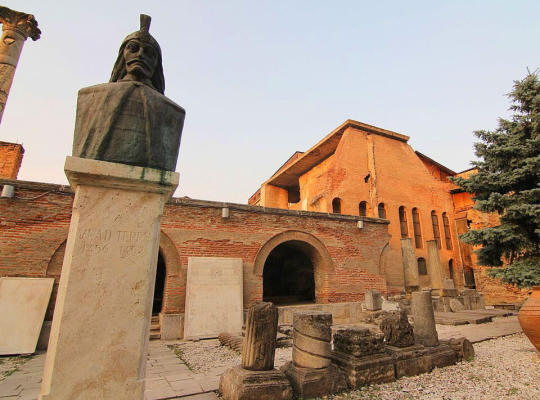
The Old Courtyard (rum. Curtea Veche – Old Courtyard), or the Princely Court (rum. Curtea Domnească din Bucureşti) is a complex of buildings designed to serve the Wallachian rulers. It was built in the second half of the 14th century by the ruler Mircea Sary. After his death was not used. In the XV century, Vlad Tepes decided to found the Dymbovitsa fortress on its ruins.
Laid on September 20, 1459 from stone, the fortress is considered the foundation of Budapest. After him, special attention was paid to the fortress after 1545 under Mircea Chobanul, who was laying the church of St. Anton (hramul Sf Anton) and the Annunciation (de Buna Vestire). Later, coronations of Romanian rulers were held in it. This is currently the oldest building in Bucharest.
The fires and natural disasters led to the desolation of the palace and the transfer of the government residence to another place, and this fortress was called the Old Courtyard. Currently, it is an open-air museum telling about the past of the Romanian capital. Here you can see the remains of the water supply system, murals and decorations of the building, fragments of the defensive fortifications and the gallery of the Court, as well as a Turkish bath built on its territory.
#Bran Castle#Canyon 7 stairs#Canyon Bicaz#Ceahlau#Corvin Castle#Fun cemetery#Laku - Roshu#Mogoshoyaya Palace#Mountain range Rodna#Mud Volcanoes#Nyametsky fortress#Peles Castle#Pelishor Castle#Piatra Craiului National Park#Poenari#Rasnov Fortress#Retezat National Park#Romanian Athenaeum#Sarmizegetusa#Scarisoara Cave#Sucevita Monastery#Throne fortress
0 notes
Text
Piero Della Francesca (1416-1492)

The Resurrection - 1463
Piero Della Francesca was an Italian painter of the Early Renaissance.
As testified by Giorgio Vasari in his Lives of the Most Excellent Painters, Sculptors, and Architects, to contemporaries he was also known as a mathematician and geometer.
Nowadays Piero Della Francesca is chiefly appreciated for his art. His painting is characterized by its serene humanism, its use of geometric forms and perspective.
His most famous work is the cycle of frescoes The History of the True Cross in the church of San Francesco in the Tuscan town of Arezzo.
- Wikipedia
Piero represents the moment of balance and perfection of Quattrocento painting.
His painting synthesizes the different pictorial experiences of the first half of the Quattrocento

The Baptism of Christ
Year: 1448–50
Type: Tempera on poplar
Technique: Painting
Dimensions: 168 cm (66 in) × 116 cm (46 in)
Movement: Early Renaissance
Location: National Gallery, United Kingdom
The lines of composition are easily noticed:
Christ stands on the central axis while the painting is inscribed in a square and a circle.
The extension of the lower part is flush with the middle of the square marked by the joined hands of Christ.
To his left, the white, cylindrical trunk of the tree prefigures the flagellation column and separates it from the angels' council.
The very pure light that bathes the landscape in the shade.
Serenity and geometric presence in each scene correspond to an abstract conception in the mathematics of the perspective.
This theoretical ambition is surely at the origin of the painting Flagellation (1455) of Urbino, the relegation of Christ in the background being contrary to all convention

Artist: Piero Della Francesca
Year: c. 1452-1466
Type: Fresco
Location: Basilica of San Francesco, Arezzo
The History of the True Cross or The Legend of the True Cross is a sequence of frescoes painted by Piero Della Francesca in the Basilica of San Francesco in Arezzo. It is his largest work and generally considered one of his finest, and an early Renaissance masterpiece.
Its theme, derived from the popular 13th-century book on the lives of saints by Jacopo da Varagine, the Golden Legend, is the triumph of the True Cross – the legend of the wood from the Garden of Eden becoming the Cross on which Jesus Christ was crucified.
This work demonstrates Piero’s advanced knowledge of perspective and color, his geometric orderliness and skill in pictorial construction.

Date: 1452 - 1466
Style: Early Renaissance
Series: The Legend of the True Cross
Genre: religious painting
Media: fresco, wall
Location: Basilica of San Francesco, Arezzo, Italy
The Queen of Sheba is a figure first mentioned in the Hebrew Bible. In the original story, she brings a caravan of valuable gifts to King Solomon. This tale has undergone extensive Jewish, Islamic, and Ethiopian elaborations, and has become the subject of one of the most widespread and fertile cycles of legends in the Orient.
Modern historians identify Sheba with the South Arabian kingdom of Saba in present-day Yemen. The queen’s existence is disputed and can’t be confirmed by historians
- Wikipedia
#artists on tumblr#art#art history#art history with Mihoki#Art history class#Renaissance#early renaissance#quattrocento#15th century#fresco#Religious#italian artist#italian painting#Basilica#Arezzo#Francesca#piero della francesca
0 notes
Photo

I’ve been meaning to make a masterpost with a list of books and articles for people interested in the Italian Renaissance - so, behold! These are taken mostly from my own bookshelf, syllabi of classes I’ve taken, and bibliographies I’ve compiled for papers I’ve written. I’ve tried to provide a broader overview of the Renaissance with more general topics, and not to give books that are too incredibly specific and not relevant unless you’re working specifically in topic. I’ve also tried to find PDFs or links for anything that you can access online.
I hope this is useful for anyone who’s interested in this period, and I will always be happy to answer questions or try to provide sources for more specific topics!
** indicates a primary source
General Reading.
The Renaissance in Europe by Margaret L. King
**The Civilization of the Italian Renaissance: A Sourcebook by Kenneth Bartlett
Florence and Beyond: Culture, Society and Politics in Renaissance Italy : Essays in Honour of John M. Najemy, ed. David S. Peterson and Daniel E. Bornstein | Google Books
The Renaissance: Italy and Abroad, ed. John Jeffries Martin | Google Books
Daily Life and Culture, Public and Private.
**The Book of the Courtier by Baldassare Castiglione | English PDF
Public Life in Renaissance Florence by Richard Trexler
Friendship, Love, and Trust in Renaissance Florence by Dale Kent | JSTOR
Dressing Renaissance Florence: Families, Fortune, and Fine Clothing by Carole Collier Frick | Google Books
Household and Lineage in Renaissance Florence: The Family Life of the Capponi, Ginori and Rucellai by Francis William Kent | JSTOR
“Did Women Have a Renaissance?” by Joan Kelly | PDF
Politics and Diplomacy.
**The Online Tratte (Election Records) of Office Holders, 1282-1532
Discourses on the First Decade of Titus Livy by Niccolò Machiavelli || English: PDF | Archive.org || Italian: PDF
The Prince by Niccolò Machiavelli || English: PDF | Archive.org | Audiobook || Italian: PDF | Project Gutenberg
Note: the Prince is not really representative of political ideology in the Italian Renaissance. I would actually recommend the Discourses more highly because of how they explore the reality, rather than the possible or ideal, of Italian politics. For Machiavelli’s works, I really like the Allan Gilbert translations, published as The Chief Works and Others
The Cambridge Companion to Machiavelli, ed. John Najemy
“The Dialogue of Power in Florentine Politics” by John Najemy, in The Renaissance: Italy and Abroad, ed. Martin| Google Books
The Florentine Magnates: Lineage and Faction in a Medieval Commune by Carol Lansing | JSTOR
Economics.
The Economy of Renaissance Florence by Richard Goldthwaite
Medici Money by Tim Parks
**The Online Catasto (Tax Records) of 1427-29
Classic Works. Some of these are now considered out-of-date, but they have done a lot to inform the current work on the Italian Renaissance.
The Civilization of the Renaissance in Italy by Jacob Bruckhardt | PDF | Project Gutenberg
The Crisis of the Early Italian Renaissance by Hans Baron | Library Access
Paleography and Manuscript Studies.
Dictionary of Latin and Italian Abbreviations/Dizionario di Abbreviature Latine e Italiane/Lexicon Abbriviaturarum by Adriano Cappelli – an absolute must-have for the would-be paleographer!! | Archive.org
Latin Paleography: Antiquity and the Middle Ages by Bernhard Bischoff
A Guide to Western Historical Scripts from Antiquity to 1600 by Michelle P. Brown
Introduction to Manuscript Studies by Raymond Clemens and Timothy Graham
Art History.
**The Lives of the Artists by Giorgio Vasari - a must have the Renaissance art historian, but also just a pleasure to read
**On Painting/De pictura by Leon Battista Alberti | Latin | Italian | English Excerpts
There are a lot of great works on individual artists, topics, or works of art, so it would be too much to list them all here! I didn’t use a single textbook to start my study of Italian art - it’s very easy to find things in this topic!
The Medici.
The House of Medici: Its Rise and Fall by Christopher Hibbert
The Lives of the Early Medici as Told Through Their Correspondence, ed. Janet Ross | Archive.org
Magnifico: The Brilliant Life and Violent Times of Lorenzo de’ Medici by Miles J. Unger
The Life of Lorenzo de’ Medici, Called the Magnificent by William Roscoe - Slightly outdated now, but a classic work, and includes some relevant primary sources | Archive.org
April Blood by Lauro Martines
The Montefeltro Conspiracy by Marcello Simonetta
Inventari medicei, 1417-1465 : Giovanni di Bicci, Cosimo e Lorenzo di Giovanni, Piero di Cosimo, ed. Marco Spallanzani
Libro d'inventario dei beni di Lorenzo il Magnifico, ed. Marco Spallanzani and Giovanna Gaeta Bertelà
Lorenzo de' Medici at Home: The Inventory of the Palazzo Medici in 1492, ed. Richard Stapleford
#letters from the authoress#queen of the quattrocento#renaissance#italian renaissance#also people please free to add or if tell me if you find any other online versions#bibliography#original#stat rosa pristina nomine
2K notes
·
View notes
Text
Thinking about the Pazzi Conspiracy and
they really did that, huh
Girolamo Riario is the more compelling character
the amount of LIES between EVERYONE
the Pazzi were important patrons of art don't forget that
Imagine if the Kress Foundation tried to kill Bloomberg and take over Manhattan. That's what it was like.
#Pazzi conspiracy#medici#letters from the authoress#this is where my thesis is taking me huh#emma writes a thesis#pazzi#queen of the quattrocento
41 notes
·
View notes
Text
Whenever I go to the archive and look at the thing I want to see and I can find the right pages and the handwriting is legible … that’s good shit.
#who needs drugs when you could have a successful day at the archive#archival work#queen of the quattrocento#Emma writes a thesis#stat rosa pristina nomine
57 notes
·
View notes
Note
I am currently reading a book I think you'd absolutely love, it's called The Bookseller of Florence and it is about Renaissance manuscripts and is part biography, as it centers around the life of Vespasiano da Bisticci who was the most famous seller of manuscripts and clients all over Europe. I hope you've been doing well, Emma!
You're in Florence right now? That's where the guy from the book I told you about is from!!
Vespiano da Bisticci is such a cool figure! I haven't read that book but I know all about him – he was effectively Cosimo de' Medici's manuscript dealer. You should also check out Poggio Bracciolini, who went manuscript hunting in monastic libraries and rediscovered Lucretius' De rerum natura. (The Swerve by Stephen Greenblatt is an easy/not-too-academic read about it).
In any case, yes, I'm actually in Venice at this particular moment but I'm spending the summer doing archival work in Florence. Things are going very well for me, and I hope you're good too!
83 notes
·
View notes